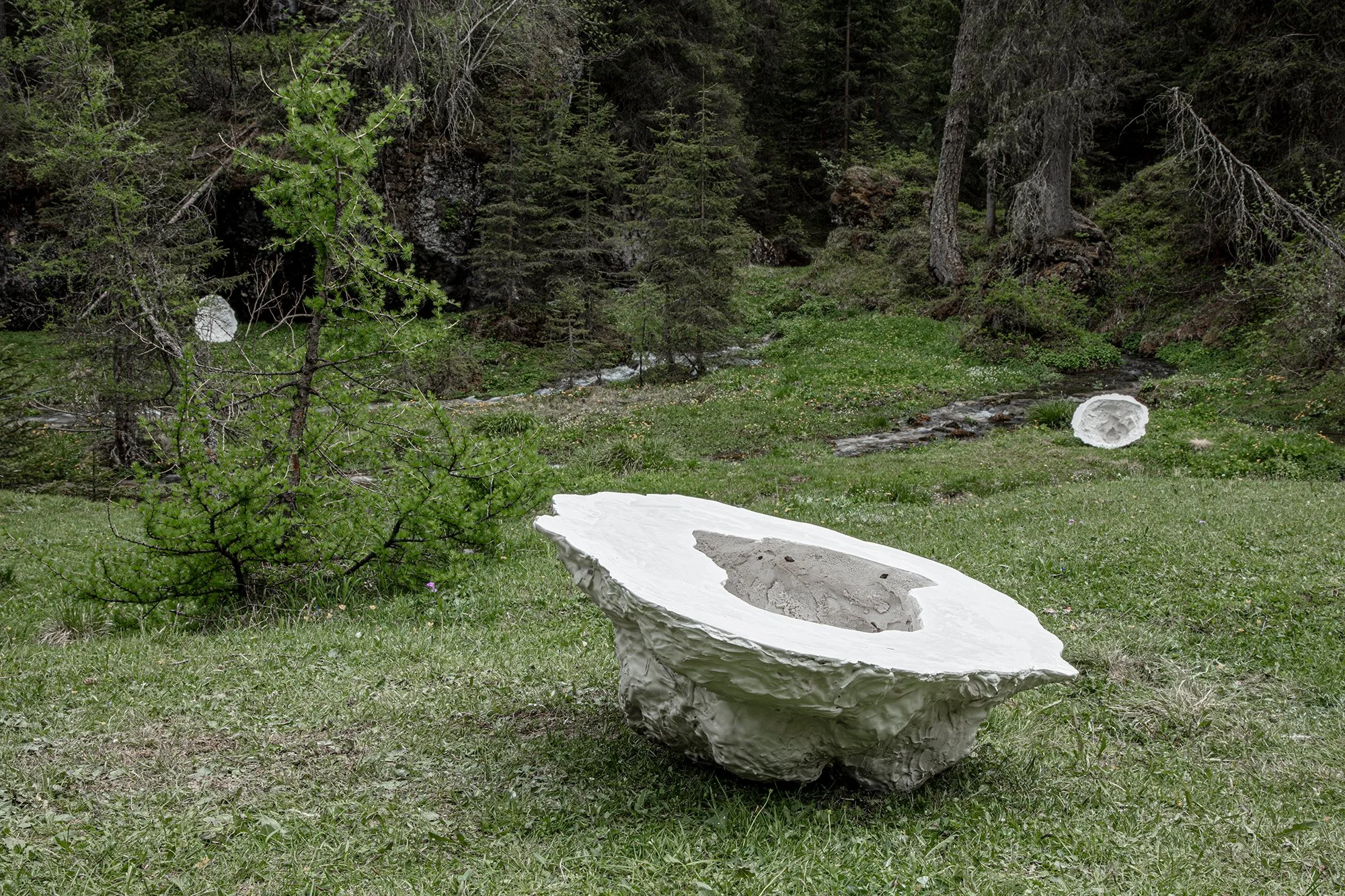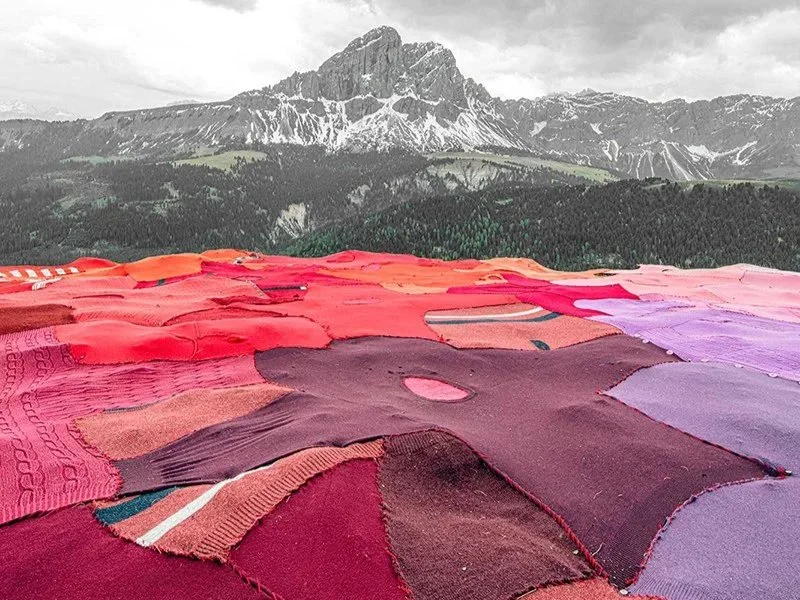Dem Ferner näher
Elisabeth Eiter
Elisabeth Eiter's intervention is site-specific in a twofold sense: it is designed for this place and is carried out on site. The artist took some blocks of snow from the surrounding area, took them to Pares and placed them on shelves to cover them with plaster. The encounter of discrepant elements causes a reversal of the respective characteristics. The viscous plaster hardens and releases heat, which in turn melts the ice, thus revealing the shape of its negative. How can one accept or take the diminution and attenuation of something? This is one of the reflections that the artist would like to propose, indicating as a possible solution the proactive surprise of the emergence of something new.
The title also contains a play on words: "Ferner" has two meanings - on the one hand it's the surface snow layer of a glacier that compacts over time and becomes ice, on the other hand it is the comparison of the adjective "far", so "farther"; "näher" is "closer". The semantic game wants to suggest that the Heimat is a return to a closeness (geographical, but especially emotional). The closeness to something that is felt to be original is in turn, according to the artist, the bearer of contentment - Heimat is therefore the nostalgia for an ancestral state of happiness.



Exhibit place Pares
Ćialdires and Pares, the springs close to the Longiaru valley are one of those hidden and isolated places where human beings can feel the forces of nature. The water element, also important in myths and legends (the Ganes always lived close to a spring or lake), creates synergies that kindle the imagination and spirit of whosoever stops in those places.











